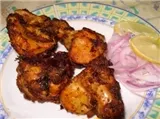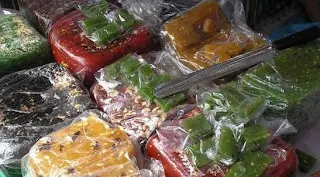Some foods get all of the glory. (Pomegranates, we’re looking at you.) But new research is uncovering the age-defying, disease-fighting, fat-blasting superpowers of common foods you already love. These 22 edibles are cheap, quick to prep, mouth wateringly delicious — and most are probably already in your kitchen. And to make it even easier for you to tap into their head-to-toe benefits, we created a tasty seven-day diet plan featuring every age eraser on our list. A diet that fights fine lines, fatigue and heart disease and helps you lose 2 pounds per week — what are you waiting for? Dig in!

Almonds - Savor this snack. Dieters who noshed on almonds daily shed 62 present more weight and 56 percent more fat than those who didn’t, a study from Loma Linda University in California finds. “The fiber in nuts may prevent your body from absorbing some fat, speeding weight loss,” says lead author Michelle Wien, R.D. Almond eaters also lowered their blood pressure, and the vitamin E in these nuts may keep skin supple.Reap the rewards. Chomp on 1 ounce (about 35) raw or roasted almonds daily.
Barley - Give your usual brown rice an upgrade. Barley has almost twice the fiber, plus cancer-fighting selenium. And beta glucan, a form of fiber in barley, helps lower cholesterol and reduces your body’s rate of fat absorption. When people with high cholesterol ate 3 to 10 grams of beta glucan daily, their levels of LDL (“bad”) cholesterol and triglycerides fell, a study in the Annals of Family Medicine shows.Reap the rewards. Quick-cook barley takes less time to prep but offers the same perks.
Bison - To sculpt sexy muscles, try this healthy beef alternative. The proof is in the patty: Three oz of ground bison deliver 50 fewer calories and nearly half the fat of a 70 percent lean beef burger. Choose grass-fed varieties; they contain more heart-healthy omega-3 fatty acids than beef from conventionally grain-fed cows.Reap the rewards. When you’re making bison burgers, avoid flare-ups and charring on the grill — both may be linked to higher cancer risk.

Black beans - Basic black is always in style; the darker a bean’s coat, the higher its antioxidant activity. Beans are so good for you, they straddle two slots on the food pyramid. “They have enough protein to be a meat, and the vitamins and fiber of a veggie,” says Christine Gerbstadt, M.D., spokeswoman in Sarasota, Florida, for the American Dietetic Association (ADA). One cup packs half your daily folate, blood pressure–regulating magnesium and energizing iron.Reap the rewards. Canned beans are as healthy as dried and don’t need soaking. Look for no salt added or rinse them to limit sodium.

Brussels sprouts - The vegetable you hated as a kid could help restore your youthful glow. Sprouts contain vitamin A to keep your immune system healthy and vitamin C to aid collagen building and fight wrinkles. Plus, they offer a phytonutrient that can help clear away carcinogenic substances in the body, says Keri Gans, R.D., spokeswoman in New York City for the ADA.Reap the rewards. Cook sprouts briefly and add olive oil; both help you nab more nutrients.
Cabbage - Be-leaf it! Women who ate more than three-cup servings of cabbage weekly slashed their breast cancer risk by 50 to 70 percent, a study from Michigan State University in East Lansing notes. Cabbage has phytochemicals that may ward off the disease. And it may lower your cholesterol nearly as much as oat bran, a study in Nutrition Research reveals.Reap the rewards. Steaming enhances cabbage’s cholesterol-lowering ability. To fight disease, serve slaw: Phytochemicals form only after vigorous cutting or chewing.
Coffee - Far from a vice, downing 1 to 3 cups of java daily might slash your risk for death from heart disease by as much as 25 percent, a study in The American Journal of Clinical Nutrition shows. The combination of antioxidants and certain acids in coffee may work together to soothe inflammation.Reap the rewards. Choose a medium roast for the most antioxidants. And pick a drip brew: Filter papers catch coffee compounds that may raise cholesterol.
Curry - Don’t save this spice for takeout night. Early research suggests that eating curry once or twice a week might halve your dementia risk. Curcumin, a pigment in curry, may dissolve Alzheimer plaques. It may also fight cancer. When patients took a curcumin supplement, the size and number of colon polyps they had was cut in half, a study in Clinical Gastroenterology and Hepatology notes.Reap the rewards. Pair curry with black pepper (sprinkle on vegetables) to absorb 2,000 percent more of its potent compounds.
Farmed rainbow trout - Eco-friendly farmed trout contains energizing B vitamins and brain-helping omega-3s. And eating any fish once or twice a week might make your brain function as if it were three to four years younger, a study from Rush University in Chicago reveals. The DHA in fish may replenish DHA stores in your brain.Reap the rewards. Eat this lean protein once a week.
Grapes - Like vino, the skin of fresh red grapes contains the protective chemical resveratrol, which may sharpen your brain and reduce your risk for both heart disease and cancer. “And there’s no alcohol, which has been linked to certain cancers,” Gerbstadt says. Pop a bunch for a ticker-saving dessert: Eating 1 to 2 cups of red and green grapes protects against the heart-harming effects of a fatty meal, a study in Vascular Pharmacology concludes.Reap the rewards. Go organic. Imported grapes, in particular, tend to have high levels of pesticides, reports the Environmental Working Group (EWG) in Washington, D.C.

Kiwifruit - Great things come in small packages: One kiwi packs more skin-brightening vitamin C than an orange, helping you get 94 percent of your daily quota. And unlike most fruit, kiwi provides some vitamin E to fend off free radicals and keep skin smooth. Plus, people who ate kiwis twice a day for 28 days were less prone to blood clots and lowered their blood triglycerides by 15 percent, a study from the University of Oslo in Norway finds.Reap the rewards. Hot fuzz! You can eat the outside of a raw kiwi; it contains filling fiber.
Mushrooms - Make room for ’shrooms. Adding mushrooms to animals’ diets stimulated the animals’ immune system in a way that might help ward off infections and cancer, researchers from Penn State University at University Park say. They speculate that the same would likely be true in humans, and that beneficial bacteria or nutrients within fungi’s cell walls may strengthen your defenses against disease.Reap the rewards. Aim for 2 teaspoons per day. This amount can cut women’s breast cancer risk by about two-thirds, a study in the International Journal of Cancer indicates.
Onions - Onions offer a trifecta of compounds to fight disease on all fronts: fructans, flavonoids and organosulfur. Fructans encourage the growth of beneficial bacteria in your gut, to thwart infection-causing bugs. Flavonoids prevent DNA damage that might lead to cancer. And organosulfur may keep blood clots at bay.Reap the rewards. Buy stronger onions such as northern yellow. They’re best for inhibiting liver and colon cancer cell growth. Sauté, simmer, grill and roast away — their superpowers can stand the heat.
Oregano - Mamma mia! A mere .5 tsp of dried oregano contains the same amount of antioxidants as 3 cups of raw spinach, says Wendy Bazilian, R.D., author of "The SuperFoodsRx Diet" (Rodale). The pizza and pasta topper is also a surprising source of fiber (1 tsp has 0.8 grams) and bone-building vitamin K.Reap the rewards. Dried and fresh oregano pack the same antioxidant punch. Sprinkle either version on chicken, omelets or fish.
Peanuts - What do wine and peanuts have in common? They both provide off-the-chart levels of resveratrol. And in addition to lowering cardiovascular disease and cancer risk, the high-fiber, protein-filled nibble also fights hunger, making it an ideal afternoon snack.Reap the rewards. Eat an ounce of roasted, toasted or boiled nuts. They contain more disease-fighting polyphenols than raw ones.
Pumpkin seeds - Mellow out with this soothing snack. Pumpkin seeds are rich in the calming amino acid tryptophan. The seeds also deliver phytosterols that may help lower cholesterol and help fend off certain cancers. Smashing!Reap the rewards. Toss seeds into granola, cereal, oatmeal, yogurt or salad to add crunch.
Shrimp - These little guys are a calorie bargain. One 4 oz serving sets you back only 119 calories but supplies 23 g of protein, omega-3 fatty acids and selenium, an antioxidant linked to lower rates of colon and lung cancer. Plus, eating about 10 oz of shrimp daily can raise your HDL (“good”) cholesterol by about 12 percent, researchers at The Rockefeller University in New York City have determined.
Reap the rewards. Look for Canada-caught shrimp for fewer contaminants. Frozen is fine; the big chill doesn’t nix the benefits.
Skim milk - It’s not only a bone builder. People who drank more than one glass of skim milk a day lowered their risk for colon cancer by 15 percent, a study from Harvard Medical School in Boston finds. The calcium and vitamin D in milk may work together to halt the growth of cancer cells. Sip a glass as a postworkout snack. “It helps your muscles recover faster, so you can get up and work out just as hard the next day,” Bazilian says.Reap the rewards. Buy organic or look for milk without antibiotics or hormones such as rBST.
Tart cherries - This red-letter fruit is a firmer, more sour variety than the sweet cherries you usually eat. They provide relief from inflammation and pain and may help you sleep. The red globes might make dieting hurt less, too: Rats that were fed the equivalent of 1.5 cups of tart cherries for 90 days metabolized sugar better and had less belly fat than those who didn’t consume cherries, a study from the University of Michigan at Ann Arbor shows.Reap the rewards. Look for dried or frozen tart cherries or juices without added sugar, and buy organic — conventionally grown cherries are high in pesticides, the EWG notes.

Watermelon -Tomatoes get all the buzz for lycopene, a pigment that reduces your risk for heart disease and may help ward off certain cancers. But watermelon supplies more of the carotenoid, says Elizabeth Somer, R.D., of Salem, Oregon. The juicy fruit is also brimming with citrulline and arginine, which keep arteries healthy and help increase blood flow. Bikini bonus: One cup has only 46 calories and is 92 percent HO, quenching your thirst and helping you stay slim. Reap the rewards. Leave your melon on the counter to maximize its antioxidant content. A watermelon produces more carotenoids at room temperature than it does when chilled, according to USDA research.
Whole-wheat pasta - Surprise! These heart-helping noodles have a lower glycemic index than whole-wheat bread, says SELF contributing editor Janis Jibrin, R.D. That means they won’t cause blood sugar spikes. “Pasta gets a bad rap, but 1 cup of whole-wheat pasta has triple the fiber of regular pasta, so it’s really satisfying” Gans says. And people on a diet featuring whole grains lost more belly fat than those on a plan that included refined carbohydrates, a study from Penn State University College of Medicine in Hershey indicates.Reap the rewards. Not a fan of whole-wheat pasta’s chewy texture? Mix it with regular pasta at first, then slowly skew the ratio.

Yellow corn - Lend us an ear: This grain is healthful in all forms, be it baby corn or popcorn. Research from Purdue University in West Lafayette, Indiana, reveals that milled yellow corn products — such as cornmeal, grits and corn flour — are rich in the carotenoids zeaxanthin and lutein, two antioxidants that protect your eyes and skin from UV damage.Reap the rewards. Steam corn briefly to maintain the cholesterol and blood sugar–lowering benefits of the kernels.






















